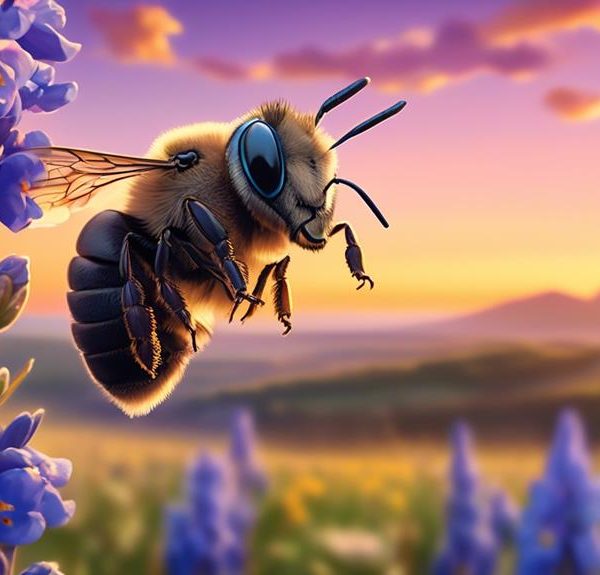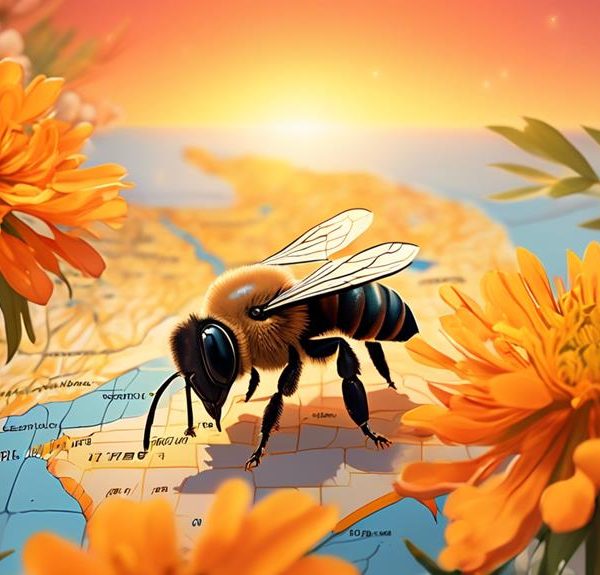Ponder the fascinating world of mason bees, understanding their gender differences and the profound impact these have on our ecosystem.
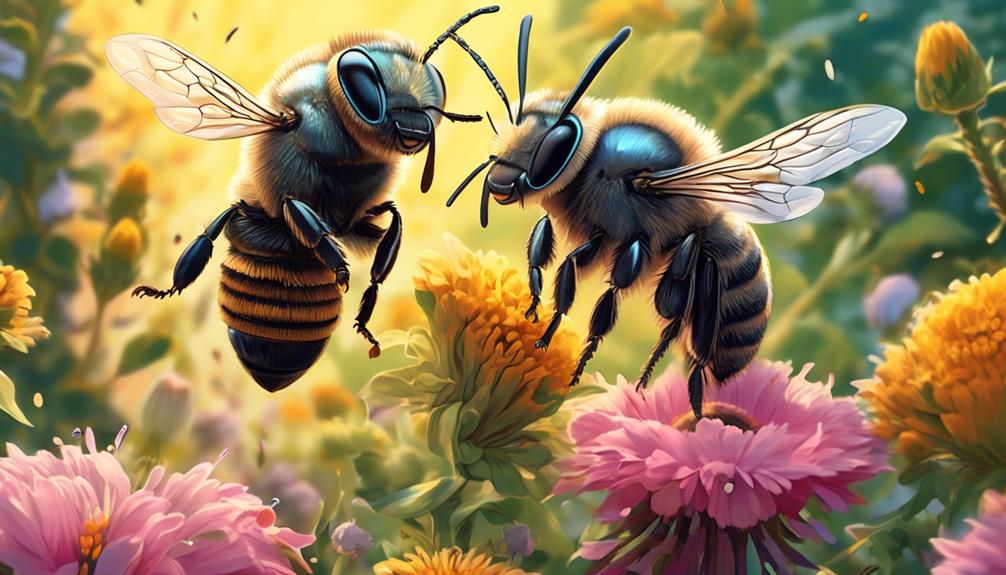
Are Mason Bees Male or Female?
Have you ever stopped to consider the gender of a mason bee? You might think it's a trivial detail, but the truth is, understanding the sex of these small creatures can offer fascinating insights into their behavior, life cycle, and their critical role in our ecosystem.
The difference between male and female mason bees is not merely a matter of biology, but it also influences their responsibilities within the hive and their impact on pollination.
But how exactly can you differentiate between a male and female mason bee, and what implications does this have on their ecosystem? That's a question we're about to explore.
Key Takeaways
- Male mason bees are smaller and have a yellow or golden coloration, while female mason bees are larger and have a darker, blueish-black coloration.
- Only female mason bees have a stinger and longer antennae than males.
- Mating occurs in the spring, and females lay eggs in mud cells and provide nectar and pollen as food.
- Male mason bees have a short lifespan and primarily mate, while females have a longer lifespan and perform mating, nest building, and provision collection.
Understanding Mason Bee Gender Differences
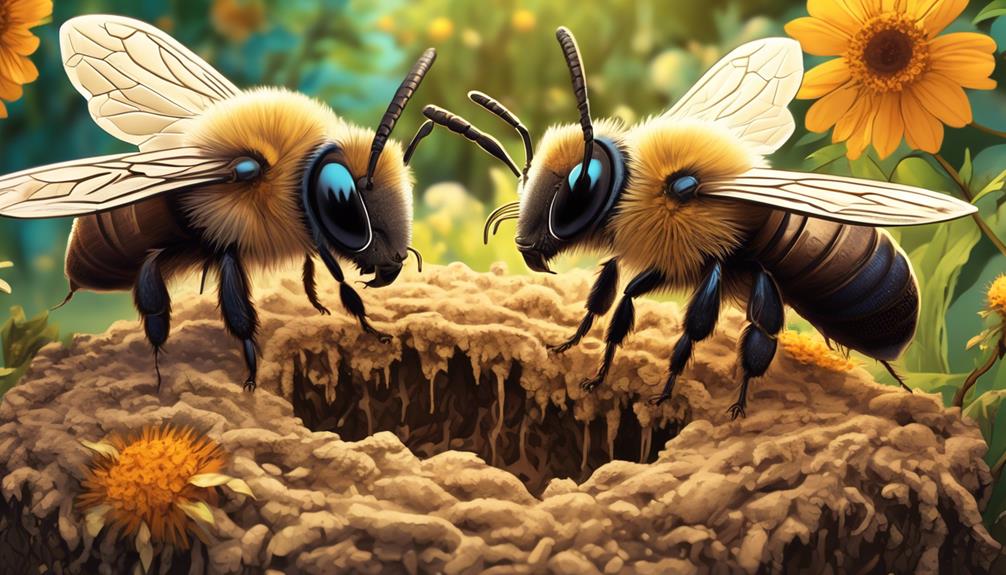
Before delving into the fascinating world of mason bees, it's crucial to understand the distinct differences between male and female bees. You'll find that these differences aren't just superficial but integral to their roles within the bee community.
Male mason bees, or drones, are slightly smaller than their female counterparts. They've one primary role: to mate with the queen. They don't have a stinger and are unable to collect pollen. Unlike honey bees, male mason bees die shortly after mating.
Female mason bees, on the other hand, have a more multi-faceted role. After mating, their primary duty is to collect pollen and nectar, which they use to create a nutritious mixture for their offspring. They lay eggs in sheltered spaces, often in small holes in wood or in the ground. Females have a stinger, but they're not aggressive and will only sting if threatened.
Understanding the distinct roles and physical differences between male and female mason bees allows you to better appreciate their contributions to the ecosystem. It also fosters a deeper understanding of their life cycle and unique behaviors, further enhancing your knowledge about these productive pollinators.
Distinguishing Male From Female Mason Bees
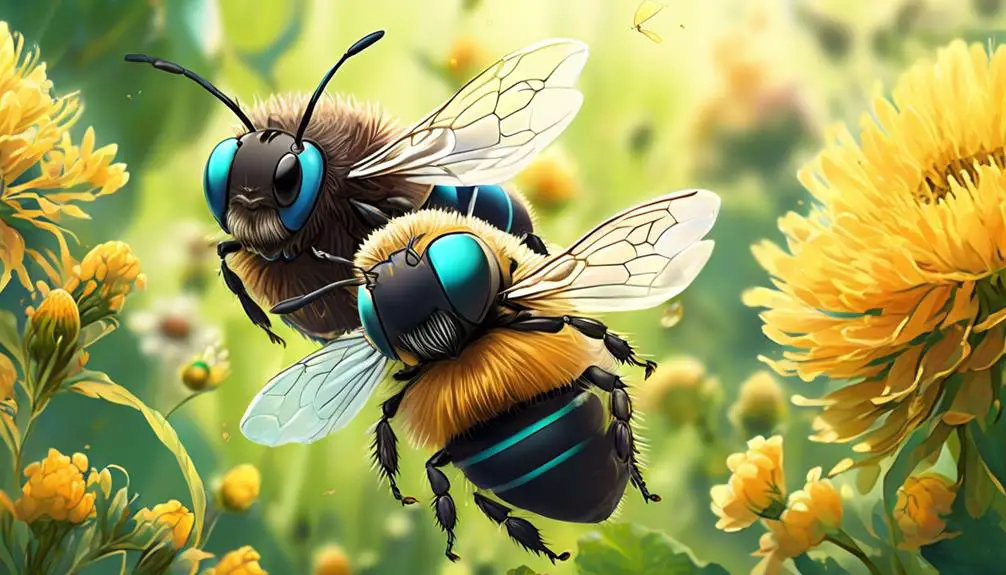
Observing closely, you'll find several markers to distinguish male from female mason bees, enhancing your understanding of these intriguing creatures. These differences, which may initially seem subtle, are actually quite distinctive when you know what to look for.
As a starting point, consider the size and coloration of these bees. Males are typically smaller than females and exhibit a more yellow or golden color. Females, on the other hand, are larger and darker, often appearing blueish-black.
Another key indicator is the presence or absence of a stinger. Only female mason bees have a stinger, while males do not. This is a universal trait among bee species.
However, probably the most telling characteristic is the antennae. Male mason bees have longer antennae than their female counterparts.
To summarize, let's look at a comparison table:
Characteristic | Male Mason Bee | Female Mason Bee |
|---|---|---|
Size | Smaller | Larger |
Color | Yellow/Gold | Blueish-Black |
Stinger | No | Yes |
Antennae | Longer | Shorter |
Life Cycle of Mason Bees
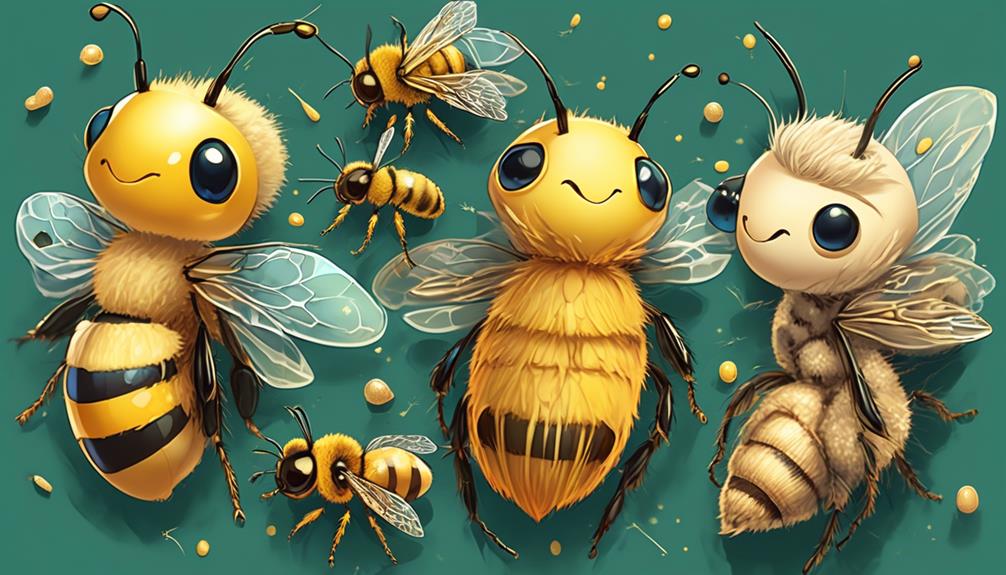
Now that you're familiar with the physical differences between male and female mason bees, let's explore their fascinating life cycle.
The life cycle of mason bees begins with mating in the spring. Females emerge from their cocoons, mate, and then search for suitable nesting sites where they'll lay their eggs. Each egg is laid in a cell made of mud, which the female bee constructs herself. She also provides a food supply, a mix of nectar and pollen, for each egg before sealing the cell.
Once the cell is sealed, the egg hatches into a larva which consumes the food supply. It then spins a cocoon and pupates, transforming into an adult bee. Intriguingly, the male bees are laid in the outer cells and hatch first, while females are in the inner cells, hatching later.
The adult bees hibernate through the winter inside their cocoons, and the cycle begins anew with the arrival of spring. This cycle, from egg to adult, takes about one year.
This life cycle, while seemingly simple, is a delicate balance intricately linked to environmental conditions.
Roles of Male and Female Mason Bees
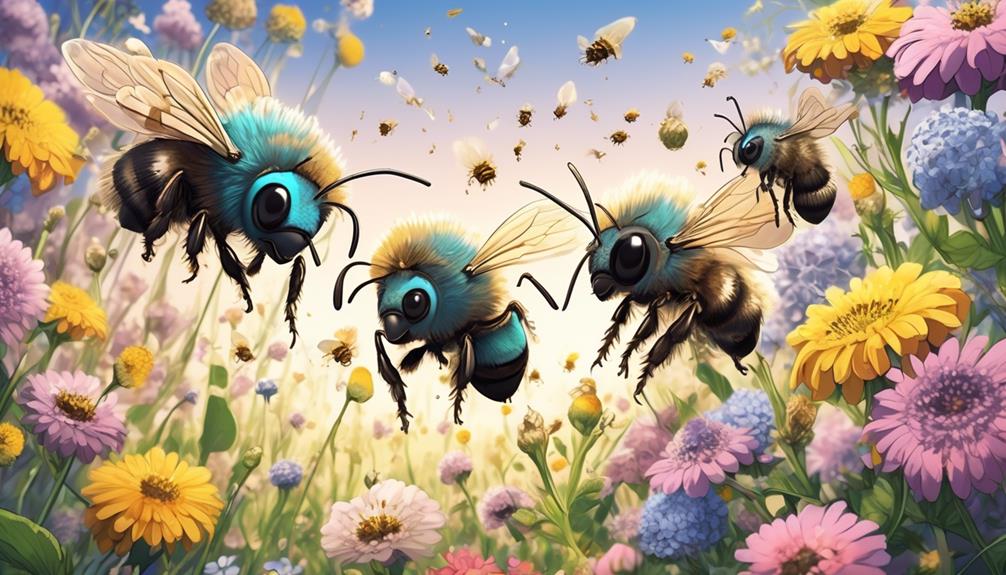
Within the realm of mason bees, each sex plays a distinct and vital role in the continuation of their species. Male mason bees, contrary to what you might think, don't have a role in nest building or provision collection. Their primary function is to mate with the females. Afterward, they die, thus completing their short yet crucial role.
Female mason bees, on the other hand, lead a busier life. After mating, they seek out nesting sites, often in hollow reeds or holes in wood. Then, they collect pollen and nectar, fashioning them into a food ball. They lay an egg on this ball, seal off the cell with mud, and repeat the process until the cavity is filled.
Below is a table to better illustrate their roles:
Male Mason Bees | Female Mason Bees | |
|---|---|---|
Lifespan | Short | Longer |
Role | Mating | Mating, Nest Building, Provision Collection |
After Mating | Die | Seek Nesting Sites and Collect Provisions |
Impact of Mason Bees on the Ecosystem
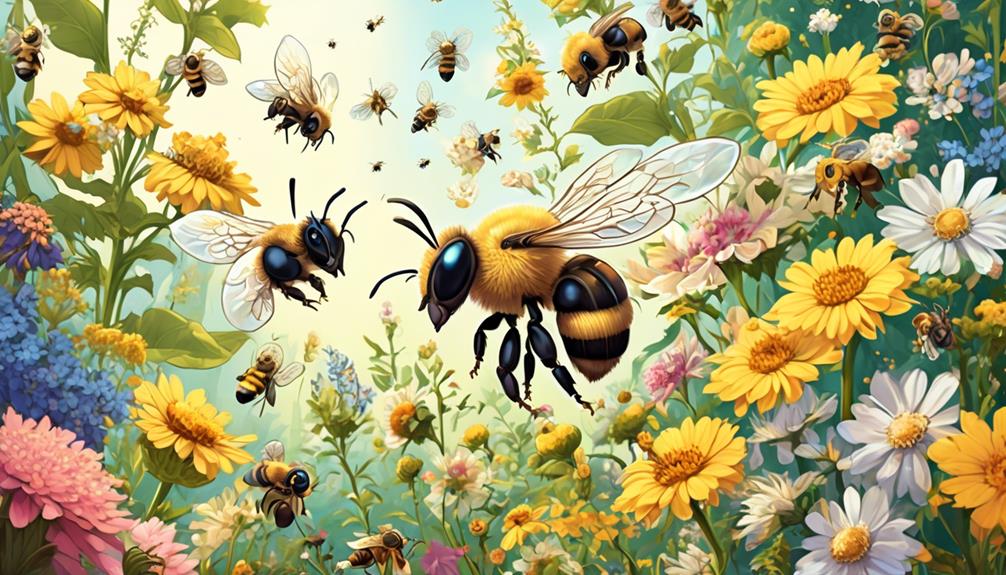
While understanding the individual roles of male and female mason bees is key, it's equally important to recognize their collective impact on the ecosystem.
Mason bees, regardless of gender, play a crucial role in pollination. They're super pollinators, meaning their pollination efficiency is remarkably high. These bees visit a wide variety of flowers, and their hairy bodies collect pollen effectively, which is then transferred to other plants, supporting plant reproduction and biodiversity.
Mason bees also contribute to the food chain. They serve as prey for numerous bird species and other insects, providing a nutritional source to these creatures. But don't mistake them for victims; they're also predators, feeding on nectar and pollen, thus controlling the population of certain plants.
Lastly, their nesting habits have environmental implications. Mason bees typically nest in pre-existing holes and tunnels. By doing so, they help in the decomposition process of deadwood, contributing to nutrient cycling in the ecosystem.
Conclusion
So, you've discovered that mason bees are either male or female, each with distinct roles.
Males fertilize females, who then play a vital part in our ecosystem by pollinating plants.
Understanding these gender differences and the lifecycle of mason bees can help us appreciate their environmental impact.
So, next time you spot a mason bee, remember they're more than just a regular insect – they're tiny environmental superheroes.

